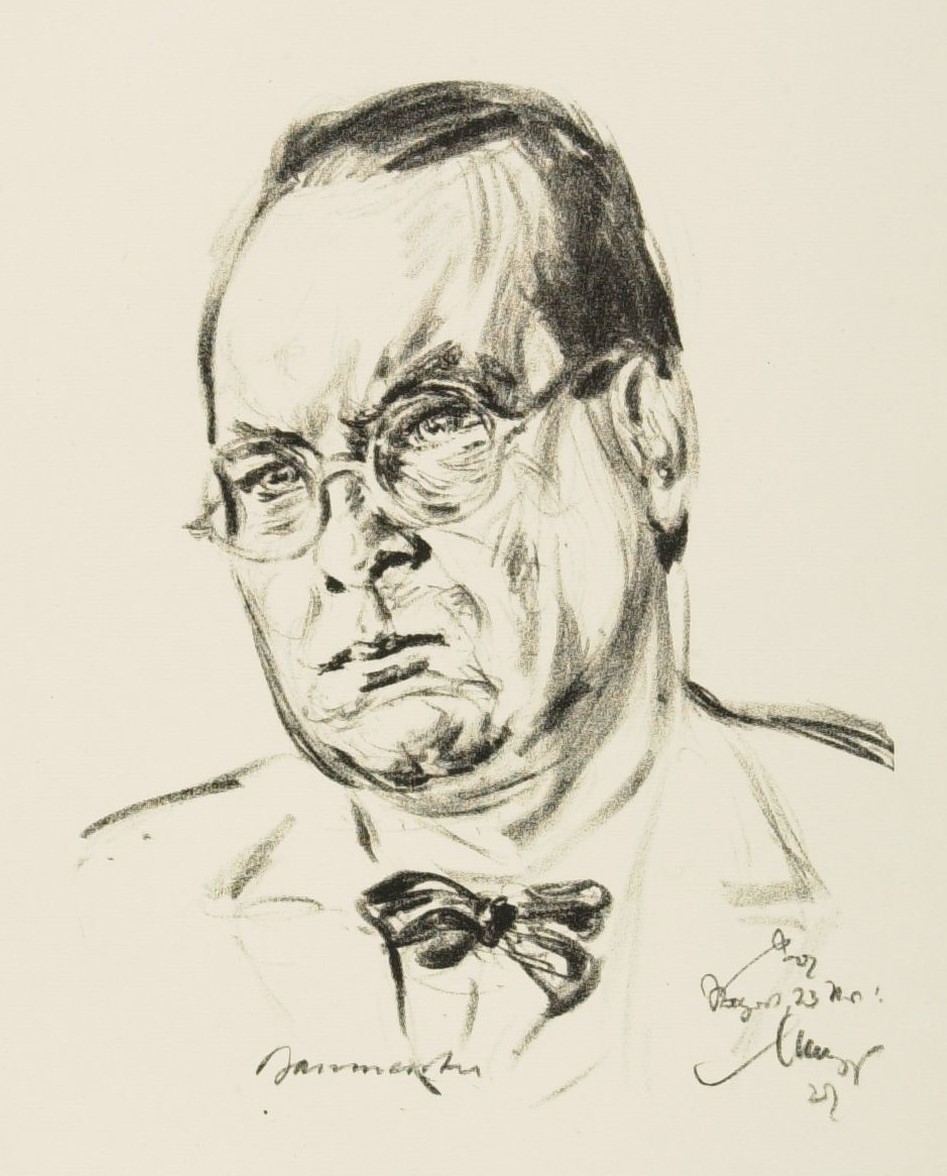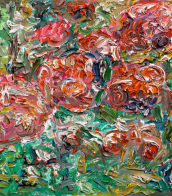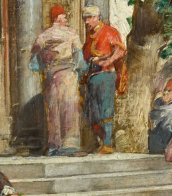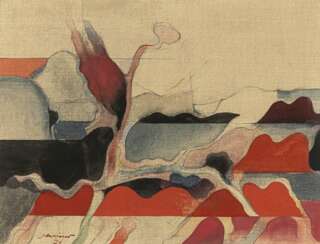hans schröder

Hans Schreiner was a German painter and stained glass artist.
Hans Schreiner, a graduate of the Stuttgart Academy, in the mid-1950s became a member of the Group of 11, which also included Atila Biro, Günter K. Kirchberger, Friedrich Sieber and Georg Karl Pfahler. The artist called himself an abstract landscape painter, he used, among other things, the Informel style to create symbolic imagery. In addition to painting,
Schreiner also designed stained glass windows and structures for churches. He was a member of the Association of German Artists and actively participated in exhibitions.


Hans Schreiner was a German painter and stained glass artist.
Hans Schreiner, a graduate of the Stuttgart Academy, in the mid-1950s became a member of the Group of 11, which also included Atila Biro, Günter K. Kirchberger, Friedrich Sieber and Georg Karl Pfahler. The artist called himself an abstract landscape painter, he used, among other things, the Informel style to create symbolic imagery. In addition to painting,
Schreiner also designed stained glass windows and structures for churches. He was a member of the Association of German Artists and actively participated in exhibitions.


Friedrich Wilhelm Otto Modersohn was a German painter of the late 19th and first half of the 20th centuries. He is known as a landscape painter, a representative of the Barbizon School.
Otto Modersohn produced Barbizonian-style landscapes early in his career, but from about 1890 his style became more expressionist, with an emphasis on his choice of colors. The death of his second wife influenced his style: the colors became darker and the images more stark. Modersohn was one of the founders of the Worpswede artists' colony. A large collection of his works is kept in the Modersohn Museum in Fischerhude, and a street in Berlin is also named after him.


Karl Schröder-Tapiau was a German painter.
He studied at the Prussian Academy of Arts, then at the Karlsruhe Academy of Arts, then settled in Dachau and after World War I he co-founded the Dachau Artists' Group (later the Dachau Artists' Association).
Karl Schröder-Tapiau painted mainly portraits and landscapes, as well as works in the Biedermeier style with touches of Impressionism. He is considered an outstanding regional painter for his landscapes with views of Dachau.


Hans am Ende was a German Impressionist painter.
In 1889 he co-founded the artists' colony in Worpswede with Fritz Overbeck, Otto Modersohn, and Heinrich Vogeler. In 1895 this group exhibited in the Kunsthalle Bremen and at the Glaspalast in Munich, which brought them national recognition. In 1900 the poet Rainer Maria Rilke travelled to Worpswede and befriended the artist's colony, eventually writing essays about each of its members.


Hans am Ende was a German Impressionist painter.
In 1889 he co-founded the artists' colony in Worpswede with Fritz Overbeck, Otto Modersohn, and Heinrich Vogeler. In 1895 this group exhibited in the Kunsthalle Bremen and at the Glaspalast in Munich, which brought them national recognition. In 1900 the poet Rainer Maria Rilke travelled to Worpswede and befriended the artist's colony, eventually writing essays about each of its members.


Willi Baumeister was a German painter, scenic designer, art professor, and typographer. His work was part of the art competitions at the 1928 Summer Olympics and the 1932 Summer Olympics.


Hans Schreiner was a German painter and stained glass artist.
Hans Schreiner, a graduate of the Stuttgart Academy, in the mid-1950s became a member of the Group of 11, which also included Atila Biro, Günter K. Kirchberger, Friedrich Sieber and Georg Karl Pfahler. The artist called himself an abstract landscape painter, he used, among other things, the Informel style to create symbolic imagery. In addition to painting,
Schreiner also designed stained glass windows and structures for churches. He was a member of the Association of German Artists and actively participated in exhibitions.


Hans Schreiner was a German painter and stained glass artist.
Hans Schreiner, a graduate of the Stuttgart Academy, in the mid-1950s became a member of the Group of 11, which also included Atila Biro, Günter K. Kirchberger, Friedrich Sieber and Georg Karl Pfahler. The artist called himself an abstract landscape painter, he used, among other things, the Informel style to create symbolic imagery. In addition to painting,
Schreiner also designed stained glass windows and structures for churches. He was a member of the Association of German Artists and actively participated in exhibitions.


Hans Schreiner was a German painter and stained glass artist.
Hans Schreiner, a graduate of the Stuttgart Academy, in the mid-1950s became a member of the Group of 11, which also included Atila Biro, Günter K. Kirchberger, Friedrich Sieber and Georg Karl Pfahler. The artist called himself an abstract landscape painter, he used, among other things, the Informel style to create symbolic imagery. In addition to painting,
Schreiner also designed stained glass windows and structures for churches. He was a member of the Association of German Artists and actively participated in exhibitions.


Hans Schreiner was a German painter and stained glass artist.
Hans Schreiner, a graduate of the Stuttgart Academy, in the mid-1950s became a member of the Group of 11, which also included Atila Biro, Günter K. Kirchberger, Friedrich Sieber and Georg Karl Pfahler. The artist called himself an abstract landscape painter, he used, among other things, the Informel style to create symbolic imagery. In addition to painting,
Schreiner also designed stained glass windows and structures for churches. He was a member of the Association of German Artists and actively participated in exhibitions.


Alois Hans Schram was an Austrian portrait, history and decorative painter. Much of his work is in the Art Nouveau style, although many later works may be classified as Neo-Baroque.


Hans Schreiner was a German painter and stained glass artist.
Hans Schreiner, a graduate of the Stuttgart Academy, in the mid-1950s became a member of the Group of 11, which also included Atila Biro, Günter K. Kirchberger, Friedrich Sieber and Georg Karl Pfahler. The artist called himself an abstract landscape painter, he used, among other things, the Informel style to create symbolic imagery. In addition to painting,
Schreiner also designed stained glass windows and structures for churches. He was a member of the Association of German Artists and actively participated in exhibitions.


Hans Schreiner was a German painter and stained glass artist.
Hans Schreiner, a graduate of the Stuttgart Academy, in the mid-1950s became a member of the Group of 11, which also included Atila Biro, Günter K. Kirchberger, Friedrich Sieber and Georg Karl Pfahler. The artist called himself an abstract landscape painter, he used, among other things, the Informel style to create symbolic imagery. In addition to painting,
Schreiner also designed stained glass windows and structures for churches. He was a member of the Association of German Artists and actively participated in exhibitions.


Hans Schreiner was a German painter and stained glass artist.
Hans Schreiner, a graduate of the Stuttgart Academy, in the mid-1950s became a member of the Group of 11, which also included Atila Biro, Günter K. Kirchberger, Friedrich Sieber and Georg Karl Pfahler. The artist called himself an abstract landscape painter, he used, among other things, the Informel style to create symbolic imagery. In addition to painting,
Schreiner also designed stained glass windows and structures for churches. He was a member of the Association of German Artists and actively participated in exhibitions.


Hans Schreiner was a German painter and stained glass artist.
Hans Schreiner, a graduate of the Stuttgart Academy, in the mid-1950s became a member of the Group of 11, which also included Atila Biro, Günter K. Kirchberger, Friedrich Sieber and Georg Karl Pfahler. The artist called himself an abstract landscape painter, he used, among other things, the Informel style to create symbolic imagery. In addition to painting,
Schreiner also designed stained glass windows and structures for churches. He was a member of the Association of German Artists and actively participated in exhibitions.






Hans Klocker was a late Gothic sculptor, active in South Tyrol.

.jpg)
Ernst Heinrich Barlach was a German expressionist sculptor, medallist, printmaker and writer. Although he was a supporter of the war in the years leading to World War I, his participation in the war made him change his position, and he is mostly known for his sculptures protesting against the war. This created many conflicts during the rise of the Nazi Party, when most of his works were confiscated as degenerate art. Stylistically, his literary and artistic work would fall between the categories of twentieth-century Realism and Expressionism.



































































